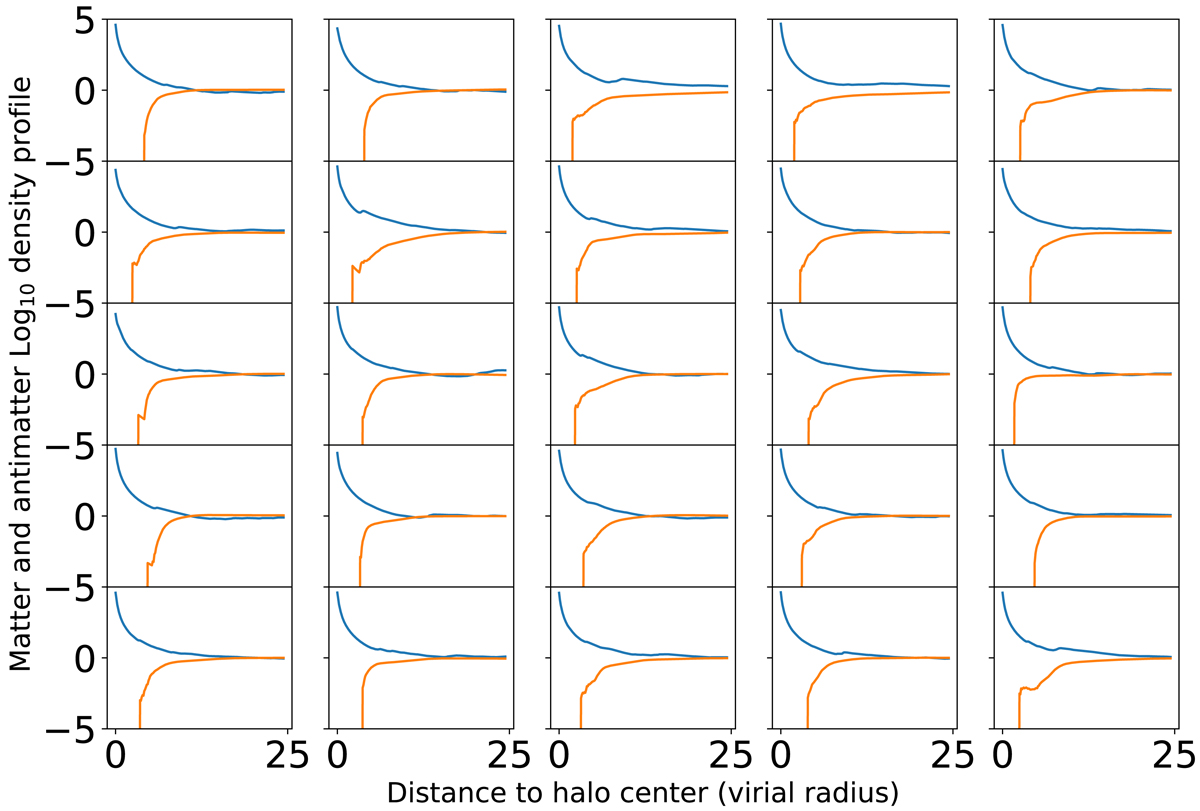Fig. 11.

Logarithmic spherical density as a function of radius for both matter and antimatter for a set of 25 halos with mass ≈107 M⊙ in our RAMSES simulation. While the density of matter, represented in blue, is steeply decreasing from the halo center, the density of antimatter, represented in orange, is zero in this region. The logarithmic density is scaled to the average matter and antimatter density, equal in D–M at large scales, and converge (equal average densities for matter and antimatter) for almost all halos. It can be seen that the antimatter density becomes non zero after a few virial radii, and that the mass of antimatter becomes on the order of the halo matter mass after typically twice the radius at which antimatter density becomes non zero. The distribution for 25 consecutive halos has been represented in the figure in order to show that this behavior is quite generic in D–M, although some variations can be seen in the distribution of antimatter around the matter halos.
Current usage metrics show cumulative count of Article Views (full-text article views including HTML views, PDF and ePub downloads, according to the available data) and Abstracts Views on Vision4Press platform.
Data correspond to usage on the plateform after 2015. The current usage metrics is available 48-96 hours after online publication and is updated daily on week days.
Initial download of the metrics may take a while.


